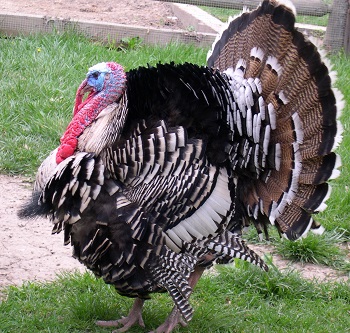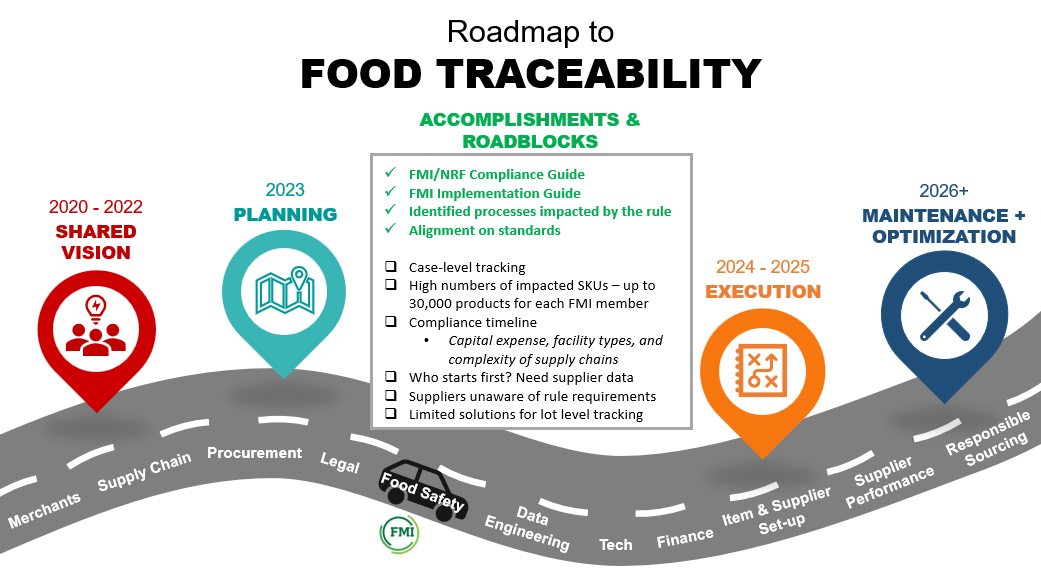By: Andy Harig, Director of Government Relations, Food Marketing Institute

If you Google “First Thanksgiving” and “Turkey,” you will find there is a surprisingly lively debate over whether turkey was actually served at the first Thanksgiving in 1621. It seems that – while we know quite a bit about this three day, men-only affair – we don’t actually have a specific list of the dishes served. Apparently, in the days before the “food selfie,” people didn’t necessarily document every last morsel they ate with quite the gusto many bring to it today.
Fortunately, whether it was served at the first Thanksgiving or not, turkey will be on the menu for many of our family dinners come November 26th. We are now about a week out from that date and consumers will be flocking to their supermarkets and grocery stores over the next several days to collect supplies. At least some of them will be wondering if turkeys will be just as scarce at their feast as it may have been back in 1621. That is because the last several years have seen the birth of a new tradition – the press wondering if there is going to be a shortage of turkeys come Thanksgiving Day.
The media loves to report on rumors of a shortage (see this report for example) almost as much as they love tearing them down (check out this very thorough AP story). Truth be told, there are genuine concerns that are giving rise to this question. The avian influenza – which the press has mostly discussed in terms of chicken production – has also hit turkeys, with production in 2015 down 9 percent from the same time last year. There were even reports throughout the summer that stores were running low on deli turkey. So, it is certainly reasonable to wonder if these impacts are going to carry over into the holiday season.
It is important to remember, though, that turkey is pretty much the star of Thanksgiving dinner, and like any celebrity it gets treated a little bit special. Supplies of turkeys destined for Thanksgiving tables are locked in early in the year, and store buyers make sure that they will have more than enough in stock so that no shopper need go home empty handed.
Even the laws of supply and demand seem to get suspended during the holidays. With production down, you’d expect to see prices go up. But USDA's most recent report shows that the cost of frozen hens is actually down a penny from a year ago, standing at 90 cents a pound (fresh turkeys are admittedly up in cost; it is difficult to hedge against production impacts on the fresh side). A smart shopper, however, shouldn’t have to look too hard to find a way to get an even better deal – many stores offer low-priced turkeys as way to get people through their doors and buying the rest of the ingredients for what is one of the best - and still most affordable - dinners of the year.
So, despite some media reports to the contrary, consumers can shop with confidence (even at the last minute) that there will be a turkey available for their family come Thanksgiving Day.
Regardless of whether we feast on turkey, ham, roast beef or something entirely different on Thanksgiving, most of us will be blessed with having enough to eat. Many Americans aren’t so lucky. Let’s all take advantage of those low turkey prices to make sure that everyone gets to share in a warm meal and the joy of the holiday. Feeding America can help you find a local food bank that will take your donations, and a number of branches of the United Service Organizations are running “Turkey for the Troops” drives.

 Industry Topics address your specific area of expertise with resources, reports, events and more.
Industry Topics address your specific area of expertise with resources, reports, events and more.
 Our Research covers consumer behavior and retail operation benchmarks so you can make informed business decisions.
Our Research covers consumer behavior and retail operation benchmarks so you can make informed business decisions.
 Events and Education including online and in-person help you advance your food retail career.
Events and Education including online and in-person help you advance your food retail career.
 Food Safety training, resources and guidance that help you create a company food safety culture.
Food Safety training, resources and guidance that help you create a company food safety culture.
 Government Affairs work — federal and state — on the latest food industry policy, regulatory and legislative issues.
Government Affairs work — federal and state — on the latest food industry policy, regulatory and legislative issues.
 Get Involved. From industry awards to newsletters and committees, these resources help you take advantage of your membership.
Get Involved. From industry awards to newsletters and committees, these resources help you take advantage of your membership.
 Best practices, guidance documents, infographics, signage and more for the food industry on the COVID-19 pandemic.
Best practices, guidance documents, infographics, signage and more for the food industry on the COVID-19 pandemic.
